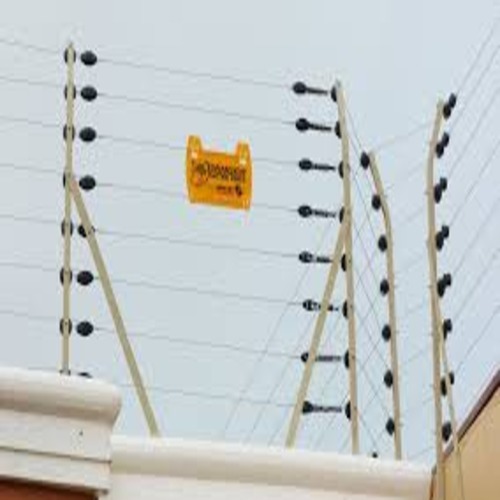Electric fence
Electric Fence Systems
Electric Fence Systems
Electric fence systems have become a popular choice for property owners seeking effective and versatile solutions for containment, security, and animal control. These systems, powered by electric currents, offer a range of benefits and applications across various industries. Understanding the components, working principles, installation procedures, and safety considerations of electric fences is essential for maximizing their functionality and efficiency. This article provides a comprehensive overview of electric fence systems, exploring their evolution, components, operation, advantages, maintenance practices, safety measures, applications, and factors to consider when selecting the right system for specific needs.
Introduction to Electric Fence Systems
Electric fence systems are modern barriers designed to provide security and control over the movement of animals or people by delivering an electric shock. The primary purpose of these systems is to deter unwanted intruders or contain livestock within a specified area.
Evolution of Electric Fencing
Electric fencing has come a long way from its early days of rudimentary designs to the advanced systems used today. Initially developed for agricultural purposes, electric fences have evolved to cater to various industries, including security, wildlife conservation, and pet containment.
Components of an Electric Fence System
Electric Fence Charger
The electric fence charger, also known as the energizer, is the heart of the system. It converts electrical energy into pulses of high-voltage current that travel through the fence wire, delivering the shock to any contact point.
Fence Wire and Insulators
The fence wire acts as the conductor for the electric current and is usually made of durable materials like steel or aluminum. Insulators are used to keep the wire isolated from the fence posts, preventing energy loss and ensuring the shock remains effective.
Grounding System
An essential component of electric fence systems, the grounding system completes the circuit by providing a path for the current to flow back to the charger. Proper grounding is crucial for the system’s efficiency and safety.
How Electric Fence Systems Work
Electric Current Flow
When an animal or person comes into contact with the charged fence wire, the circuit is completed, allowing the electric current to flow through the target. The intensity of the shock is designed to startle rather than cause harm, training animals to avoid the fence.
Behavioral Response of Animals
Electric fences operate on the principle of aversion training, where animals associate the electric shock with the fence boundary and learn to respect it. This humane method effectively prevents livestock from escaping or predators from entering an enclosed area.
Benefits of Using Electric Fences
Cost-Effective Solution
Compared to traditional fencing options, electric fence systems are more economical to install and require less maintenance over time. They offer a reliable and long-term solution for property owners looking to protect their assets.
Flexibility and Customization
Electric fences can be easily tailored to suit various applications and landscapes. Whether you need to protect crops from wildlife or define boundaries for pets, these systems offer flexibility in design and can be adjusted to meet specific requirements.
Installation and Maintenance of Electric Fence Systems
Step-by-Step Installation Guide
Installing an electric fence may sound shocking, pun intended, but fear not! Simply follow these steps:
1. Plan your fence layout
2. Install grounding rods
3. Mount your fence energizer
4. Hang your insulators and run your wire
5. Connect the wires to the energizer
6. Test your fence and adjust the settings
Tips for Effective Maintenance
Maintaining an electric fence is key to its shocking success:
– Regularly check for vegetation touching the fence
– Inspect for any damage to wires or insulators
– Test the voltage periodically
– Keep the energizer protected from the elements
Safety Considerations for Electric Fence Systems
Proper Signage and Warning Labels
Ensure your fence is appropriately marked with warning signs so that everyone knows to steer clear. Think of it as giving your fence a voice that says, “Don’t touch me!”
Training for Users and Animals
Properly educate both humans and animals on the shocking consequences of messing with the electric fence. It’s all about learning through a little spark of experience.
Applications of Electric Fence Systems
Agricultural and Livestock Protection
Keep your livestock safe and your crops secure with an electric fence. It’s like giving them a virtual force field that only they can see.
Perimeter Security for Residential and Commercial Properties
For those who take their security seriously, an electric fence is like having a guard dog that never sleeps. It’s the boundary that says, “You shall not pass!”
Choosing the Right Electric Fence System for Your Needs
Determining Your Requirements
Consider what you need your electric fence for – whether it’s to keep animals in or intruders out. It’s all about setting the shocking scene for your fence’s performance.
Factors to Consider When Selecting a System
Think about factors like the size of the area you need to protect, the type of animals you have, and your budget. Remember, it’s not just about shocking appearances; it’s about functionality too.In conclusion, electric fence systems present a reliable and adaptable solution for a diverse array of purposes, from safeguarding livestock and crops to enhancing perimeter security. By grasping the fundamental aspects of these systems and adhering to best practices in installation, maintenance, and safety protocols, users can harness the full potential of electric fencing technology. Whether for residential, agricultural, or commercial use, the versatility and effectiveness of electric fence systems make them a valuable asset for property owners looking to enhance their security measures and animal containment strategies.


